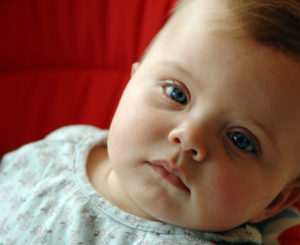Newborn babies have six different levels of sleeping and waking called ‘states’. Understanding these states will make it easier for you to read your baby’s signals and respond to their needs.
Sleep states
There are two distinct patterns of sleep for newborns. These alternate about every 30 minutes.
- Quiet Sleep: Your newborn will lie very still during quiet sleep. Heart and breathing rates are very regular and your baby’s face is relaxed. This is a good time to trim your baby’s nails.
-
Active Sleep: This is a time of rapid eye movement (REM), which is like the type of sleep that adults have. Your newborn may move their arms and legs and make different noises and/or faces. Sometimes parents think that their baby is waking up, but quite often babies will go back into a quiet sleep. Wait for a minute when you hear your baby stir. Your baby may go back to a quiet, deep sleep.

Transitional state
Drowsiness: This is an ‘in-between’ state while your baby is falling asleep or waking up. Babies respond to voices and sounds in this state by opening their eyes, and starting to move. Talk quietly to your baby during this time.

Waking states
- Quiet Alert State: Newborns spend about 10 per cent of every 24 hours in the quiet alert state. Babies look directly into their parents’ eyes, and their faces shine with a sparkling look. There is little body movement and breathing is regular. In this state, babies may imitate facial gestures. This is a great time for you to quietly talk and sing to your baby.
- Active Alert State: In this state, newborns move their arms and legs frequently and rhythmically. This state often appears when a baby is ready to eat or needs a change in activity (less stimulation or more stimulation). If you can read your baby’s signals in this state and meet their needs, you may be able to avoid a crying state.
- Crying: All babies cry. It’s one of the few ways they have to make sure they get their needs met. They might be hungry, over-stimulated, in pain, afraid, lonely or sad. There are different kinds of crying for each of these emotions. You will soon learn to recognize these in your infant. You can not “spoil” your baby by responding to their cries.
